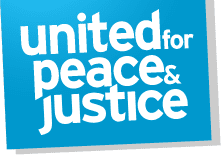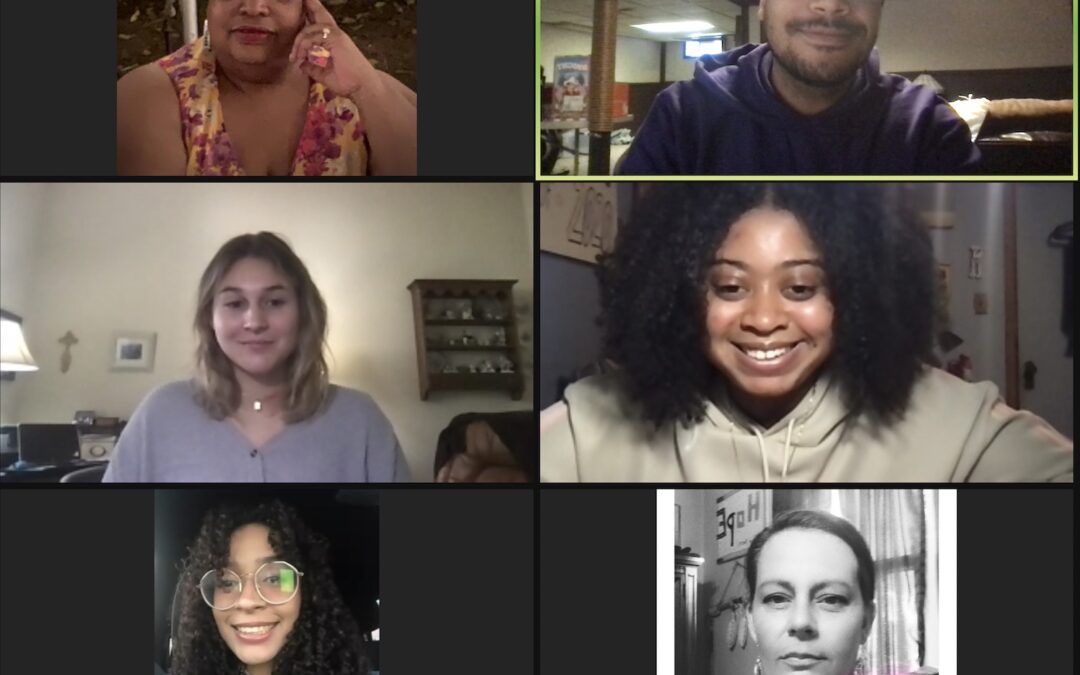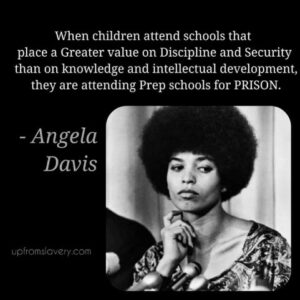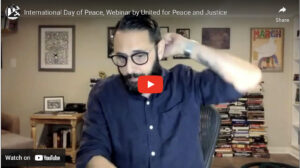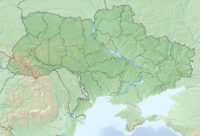United for Peace and Justice’s (UFPJ’s) initial group of emerging activists have now had about two sessions on each on the four big topics of their six-month training program with UFPJ’s National Organizer, George Friday. The topics were chosen to encourage the participants to question our culture of violence: How Did We Get Here? Does War Value Life? Who is Hurting? and Connecting the Dots to Build Power.
Their first sessions focused on, “What created the conditions for the U.S. to be as wedded to militarism as it is now in 2021?” They looked back to the 15th century and the beginnings of colonialism in the U.S. and the racial exploitations and violence that created the foundation of the culture we are experiencing now. After establishing how the greed and exploitation of people for land and labor during colonialism still shapes our present, they started to examine what our culture teaches about life.
They questioned government’s ongoing commitment to the military: spending on weapons, invading and occupying other countries, and endless wars, and asked, does war show ANY value for life? They began to explore the ongoing ecological devastation rooted in White Supremacy and the role of nuclear weapons in the U.S. military arsenal. They looked in detail at the U.S. use of nuclear weapons on Hiroshima and Nagasaki in 1945, focusing on what this use of nuclear weapons tells us.
The Peacekeepers recognized patterns that have only become more flagrant, routine, and even normalized over time as “patriotism.” It was clear through genocide, slavery, and especially with the atomic bombings of Hiroshima and Nagasaki (since people were killed basically as an experiment) that U.S. militarism values white lives over other people’s lives. The Seeding Peacekeepers teams agreed that abolishing nuclear weapons should be a core demand for all of their projects.
Their next meetings focused on the local work each team will be doing and where each of the projects are in their plans. The first task was to identify the communities where they want to connect, build community, and make changes, asking, “Who is hurting where you are?” An organizer has the responsibility to identify those communities, amplify the stories that they’re telling, and lift their voices to create the change needed locally.
Future sessions will focus on connecting the dots and building power. Drawing on the stories from those affected communities, “How do we then connect to other organizations and initiatives to build power, expand any victories, address any new concerns and opportunities?” A big piece of that work is not just connecting the dots between communities, organizations, individuals, and initiatives, but connecting the dots between issues and fronts of struggle – environmental justice, community violence, the overuse of police, criminal (in)justice, the school to prison pipeline and militarism.
Building on a successful campaign to remove the Niagara County Law Enforcement Academy from their campus, students at Niagra University in upstate New York, including Peacekeepers Matthew McKenzie, Katrina Giordano, and Marissa Meyers, are leading a project to reclaim the space as a “Student Hub for Equity and Inclusion.” Through their club, Peace Action, they plan to incorporate and develop a food pantry, a menstrual hygiene bank, a clothing exchange, and more. This hub will be a safe space for all students, and will be used to foster a sense of community through action, advocating, and organizing. According to a December 13 organizing statement by the three Peacekeepers: “There is symbolic beauty in the transformation of the space from one that would incite fear and political violence, to one that will build a sense of community, peace, and unity.”
Early next year, after their thematic online meetings end, George will be available to the Peacekeeper teams as they implement their projects. By next Spring they will all have completed the work in their communities and on their campuses and be ready for their next steps.
